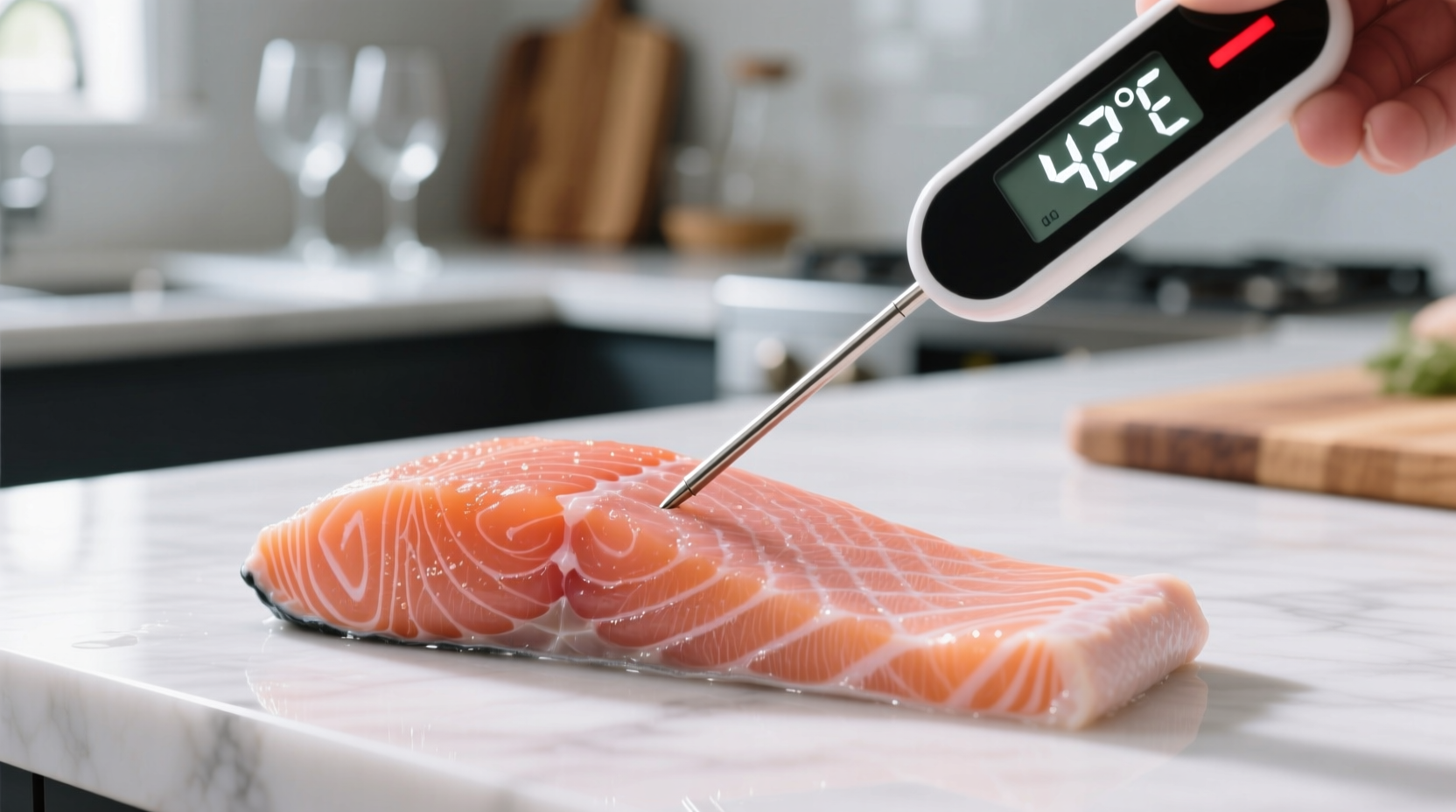Getting fish temperature right isn't just about safety—it's the difference between tender, flaky perfection and dry, overcooked disappointment. Whether you're preparing delicate sole or meaty salmon, understanding precise temperature targets ensures both safety and culinary success. This guide delivers science-backed temperature recommendations you can trust, with practical tips that work whether you're grilling, baking, or pan-searing.
Why Precise Fish Temperature Matters for Safety
Undercooked fish harbors dangerous pathogens that cause nearly 185,000 foodborne illnesses annually in the United States alone. The USDA Food Safety and Inspection Service mandates 145°F (63°C) as the minimum safe temperature because it effectively destroys harmful bacteria including:
- Vibrio vulnificus - Common in raw oysters, causes severe gastrointestinal illness
- Anisakis - Parasitic worm found in raw fish, eliminated at proper temperatures
- Listeria monocytogenes - Particularly dangerous for pregnant women and immunocompromised individuals
| Temperature Range | Bacterial Growth Rate | Time to Double Population |
|---|---|---|
| 40°F-140°F (4°C-60°C) | Explosive growth | 20 minutes |
| 140°F-165°F (60°C-74°C) | Slowing significantly | Hours |
| 165°F+ (74°C+) | Complete destruction | Instant |
This temperature timeline shows why hitting 145°F is critical—pathogens multiply rapidly in the "danger zone" between 40°F and 140°F. Leaving fish in this range for more than two hours creates serious health risks, especially for vulnerable populations.
Fish Temperature Guide by Type and Cooking Method
While 145°F works for most fish, specific varieties and cooking techniques require nuanced approaches. Professional chefs adjust targets based on fish composition and preparation method:
| Fish Type | Recommended Temp | Visual Cues | Special Considerations |
|---|---|---|---|
| Fatty fish (salmon, mackerel) | 125°F-130°F (52°C-54°C) | Slightly translucent center | Carryover cooking raises temp 5-10°F |
| Lean white fish (cod, halibut) | 140°F-145°F (60°C-63°C) | Opaque throughout, flakes easily | No carryover cooking benefit |
| Shellfish (shrimp, scallops) | 120°F-125°F (49°C-52°C) | Opaque with slight springiness | Overcooks rapidly past 130°F |
| Sushi-grade fish (for raw consumption) | 145°F before freezing | N/A | FDA requires freezing at -4°F for 7 days to kill parasites |
For accurate readings, insert your thermometer into the thickest part of the fish, avoiding bones which conduct heat differently. Digital instant-read thermometers provide the most reliable results—never rely solely on cooking time estimates.
How to Check Fish Temperature Correctly
Many home cooks make critical errors when checking fish doneness. Follow these professional techniques:
- Choose the right thermometer - Use a digital probe thermometer with 0.1°F accuracy (like Thermapen) rather than dial thermometers
- Calibrate regularly - Test in ice water (should read 32°F/0°C) or boiling water (212°F/100°C at sea level)
- Measure at multiple points - Especially for larger fillets or whole fish
- Check early and often - Fish cooks quickly; start checking 3-5 minutes before expected finish time
- Account for carryover cooking - Remove fish from heat 5°F below target temperature

When using sous vide or slow-cooking methods, you can safely cook fish at lower temperatures for extended periods. The National Center for Home Food Preservation confirms that cooking fish at 130°F for 35 minutes achieves the same safety as 145°F instantly due to time-temperature relationships.
Avoiding Common Temperature Mistakes
Even experienced cooks fall into these temperature traps:
- The "Flake Test" Fallacy - Many fish types don't flake until significantly overcooked. Rely on thermometer readings first.
- Ignoring Thickness - A 1-inch thick fillet needs different timing than a thin sole fillet. Always measure temperature rather than time.
- Wrong Thermometer Placement - Inserting near bones or edges gives false readings. Target the geometric center.
- Not Accounting for Cooking Method - Grilled fish cooks faster on the exterior than baked fish, requiring different temperature monitoring approaches.
For vulnerable populations—including pregnant women, young children, older adults, and immunocompromised individuals—always cook fish to the full 145°F standard. The slightly drier texture is worth the eliminated risk of foodborne illness.
Practical Temperature Tips for Home Cooks
Without professional equipment, follow these field-tested methods:
- The Finger Test - Press the thickest part; properly cooked fish should feel firm but yield slightly
- Visual Inspection - Opaque flesh with clean separation along natural lines indicates doneness
- Time Adjustment Formula - For every additional ¼ inch of thickness, add 1-2 minutes cooking time
- Resting Protocol - Let fish rest 3-5 minutes after cooking to allow heat distribution
Remember that fish continues cooking after removal from heat—a phenomenon called carryover cooking. This effect varies by cooking method:
- Grilling/broiling: 5-10°F temperature rise
- Baking: 3-5°F temperature rise
- Pan-searing: 5-8°F temperature rise
- Sous vide: Minimal carryover (remove at exact target)











 浙公网安备
33010002000092号
浙公网安备
33010002000092号 浙B2-20120091-4
浙B2-20120091-4